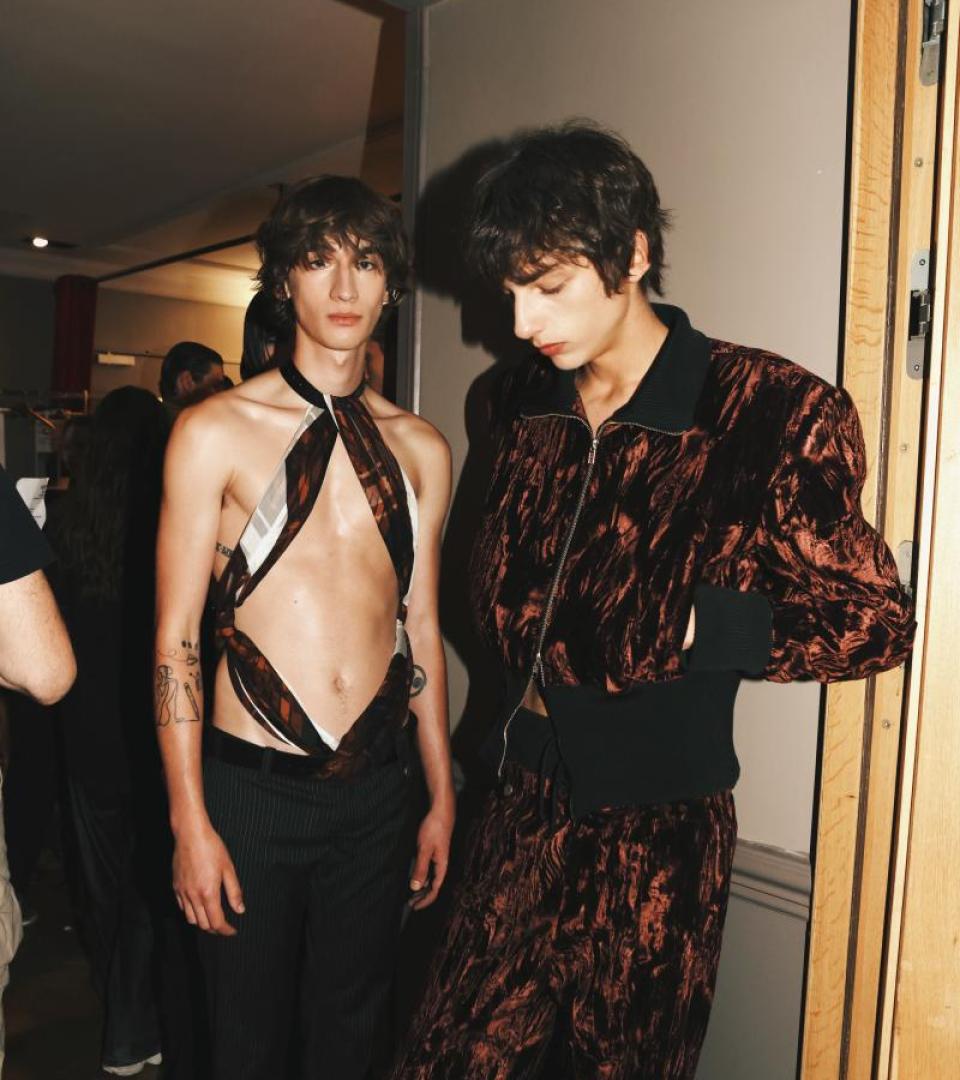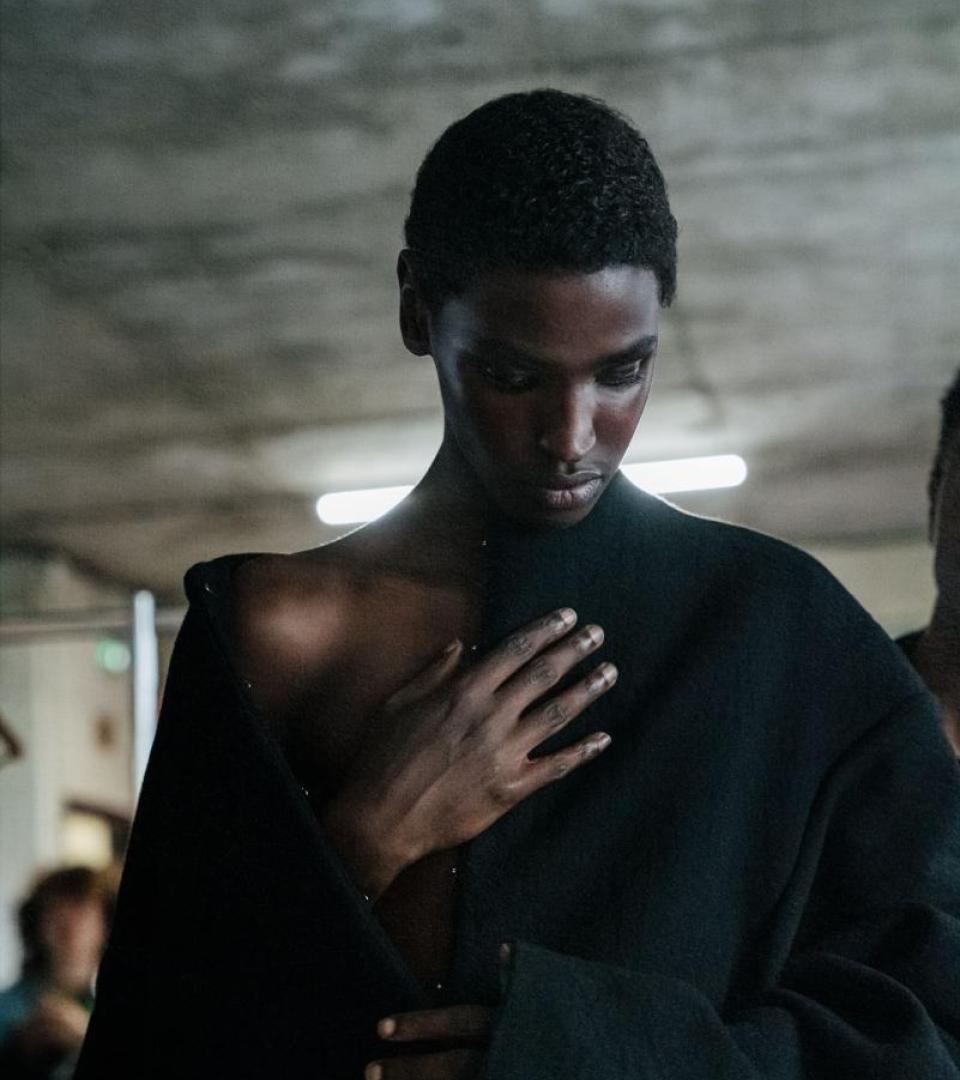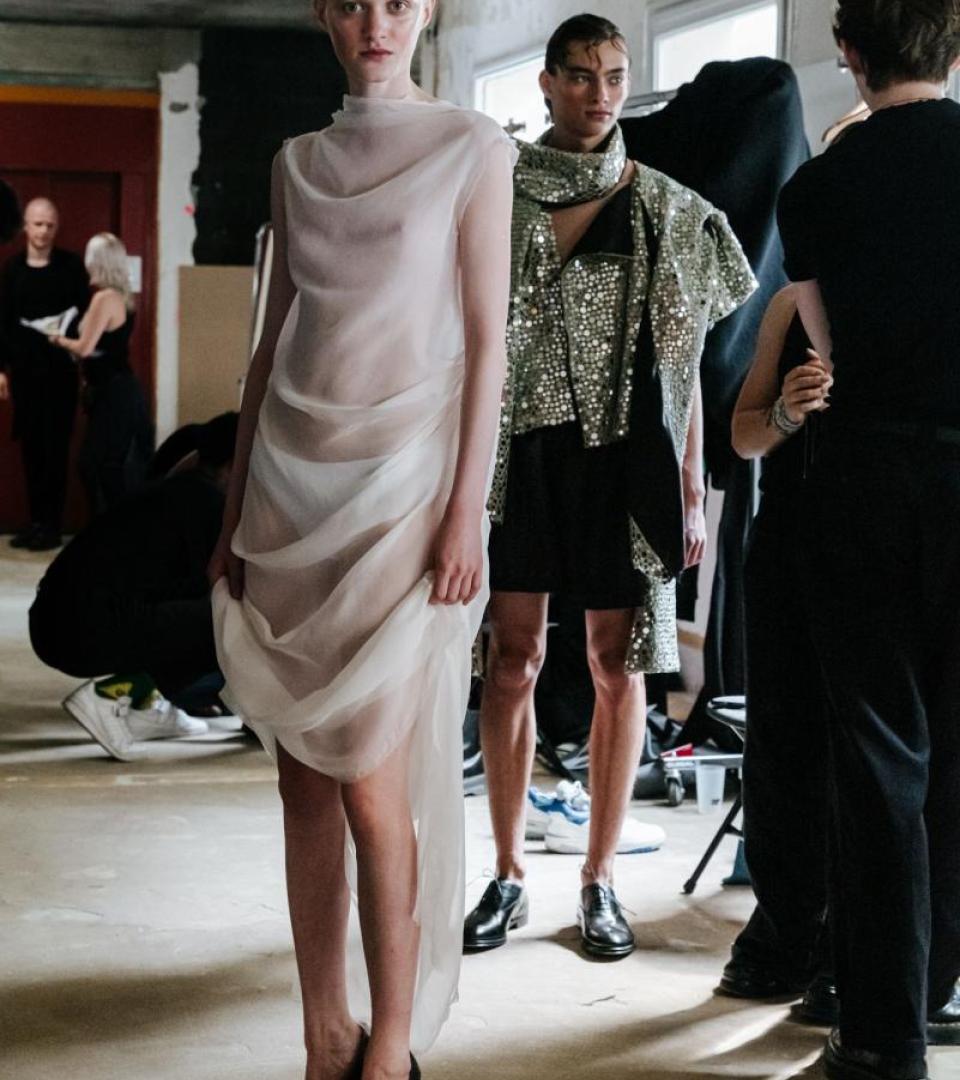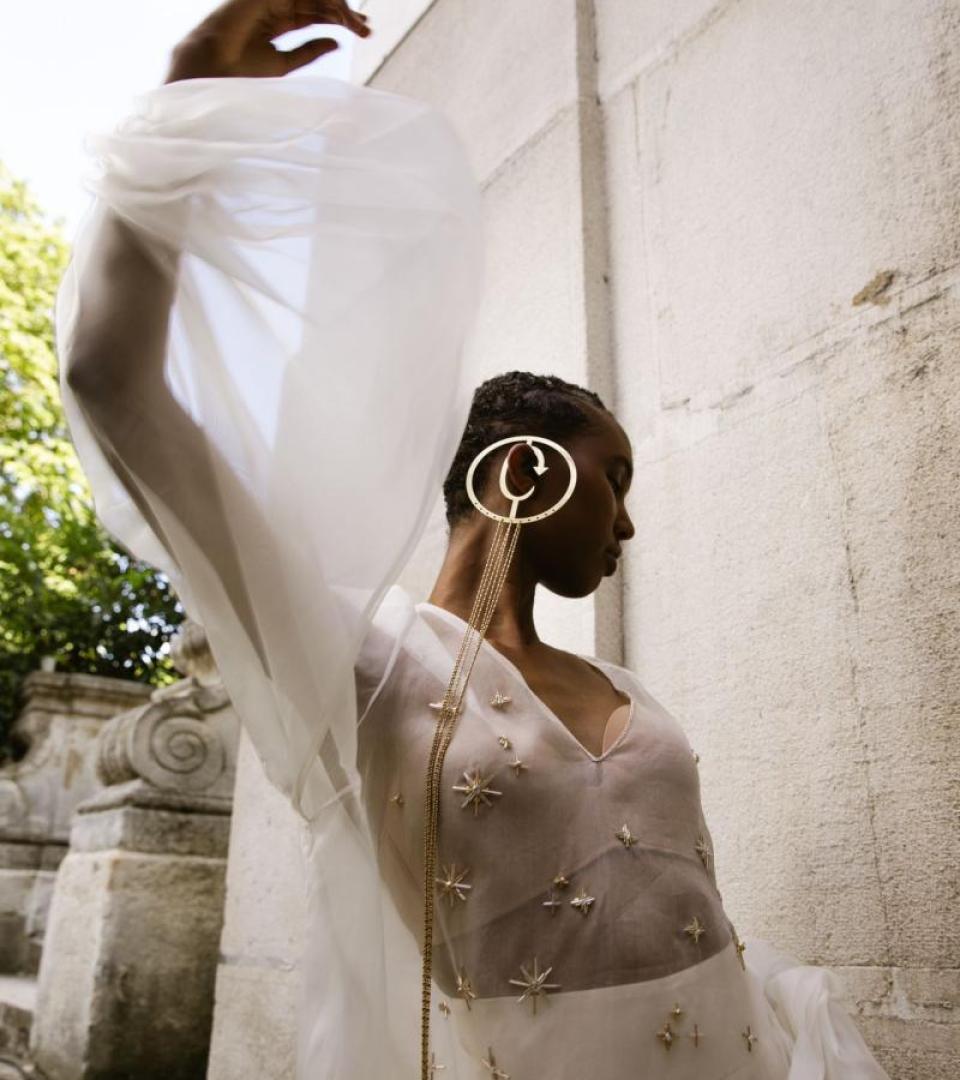Lagos Space Programme Bridges Fashion Worlds
For Fall-Winter 2024, the Lagos Space Programme story opens with a fictional British-Nigerian immigrant at the apex of his professional life, invested in his career and their philanthropy, who never loses sight of his African roots. Invited by the oba (‘ruler’ in Yoruba), to attend a festival in his homeland, the character embarks on a sartorial homecoming journey. Designer Adeju Thompson’s latest outing amounts to a collection that deconstructs gentlemanly dress codes refracted through a queer lens and grounded in the nexus of British and African influences. From A Life in Fashion: The Wardrobe of Cecil Beaton to Ovation (a Nigerian magazine he compares to Hello!, the British title that publishes stories about high society), Thompson has bridged the two cultures and explored the many ways they interact.
He arrives at this true melding of cultures in an act he calls “decolonizing fashion.” On one hand, there are musings on Britishisms through rigorous tailoring and dramatic coats. On the other, traditional West African garments become modern through the use of contemporary fabrics like wool and silk. Elsewhere, one can find an ancient indigo dyeing technique called àdìrę, which is employed to emulate the Prince of Wales check. Other styles are painstakingly hand-painted, resembling hand-woven fabrics in their meticulous finish. Quintessentially British Mackintosh outerwear is enriched with elaborate baroque patterns. “I want to celebrate the fact that we live in a global world where people can take from anywhere – so not to see one culture as more important than the other,” the designer explained over the phone from Lagos ahead of arriving in Paris for fashion week.
By Paul McLauchlan.



